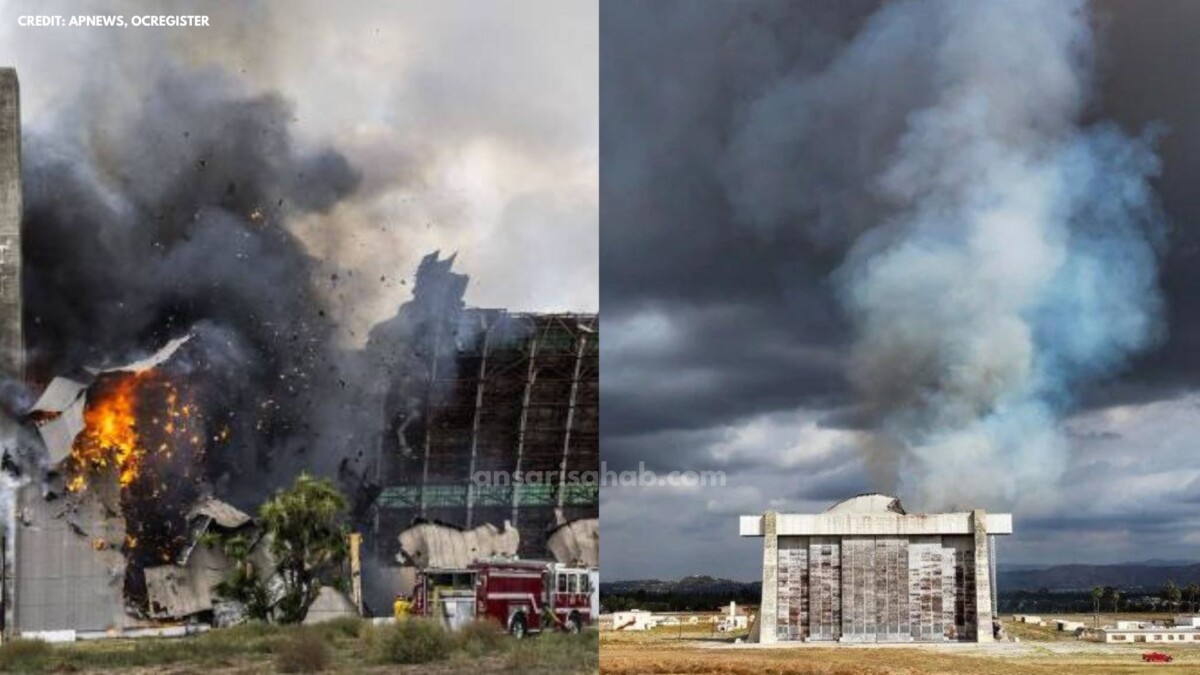The Tustin hangar fire that erupted on November 8, 2023, at the former Tustin Air Base in Orange County, California, has not only left a historic structure in ruins but has also unleashed a potentially hazardous substance into the air – asbestos. In this comprehensive blog, we will delve into the nature of asbestos, the reasons behind its presence in the Tustin hangar, the health risks associated with asbestos exposure, and the ongoing efforts to mitigate the environmental and public health impacts.
Understanding Asbestos:
Asbestos, a naturally occurring mineral once lauded for its fire-resistant and insulating properties, is now known to be a potent carcinogen. Exposure to asbestos can lead to severe health issues, including lung cancer, mesothelioma, and asbestosis. The Tustin hangar, constructed in 1942 for the storage and repair of blimps, likely contained a substantial amount of asbestos due to the widespread use of the mineral in blimp construction during that era.
Asbestos Release during the Tustin Hangar Fire:
The intense heat generated by the hangar fire caused the asbestos within the structure to break down into minuscule fibers. These airborne fibers posed a significant risk as they could be inhaled by individuals in the surrounding area, potentially leading to severe health consequences.
Health Risks of Asbestos Exposure:
Exposure to asbestos is linked to various health problems, including lung cancer, mesothelioma, asbestosis, and other respiratory issues. The Tustin hangar fire has heightened concerns about the potential health risks for those exposed to the released asbestos fibers.
Cleanup Efforts at the Tustin Hangar Site:
Collaborative efforts between the Navy and the City of Tustin are underway to address the aftermath of the hangar fire. Key components of the cleanup include the removal of asbestos-containing debris, the application of water to prevent airborne asbestos fibers, and continuous monitoring of air quality to ensure safe asbestos levels.
Protective Measures for Residents:
If you reside in the Tustin area, implementing precautionary measures is crucial to protect yourself and your family from asbestos exposure. These measures include avoiding contact with debris from the hangar fire, keeping windows and doors closed, using air conditioning with the recirculate setting, and wearing masks when venturing outside.
Read Also: Iceland Volcano Eruption 2023: A Comprehensive Overview
Hangar Fire Reignition and Subsequent Developments:
Regrettably, on November 9, 2023, the hangar fire reignited, releasing additional asbestos into the air. This prompted the closure of schools and parks in the vicinity. Health officials expressed concerns about potential health risks and advised residents to stay indoors, avoid debris, wear masks, and practice frequent handwashing.
School and Park Closures:
The Tustin Unified School District temporarily closed all schools on November 9, 2023, due to the hangar fire’s impact on air quality. Parks, including the Tustin Ranch Golf Course, Tustin Sports Park, Tustin Community Center, and Tustin Library, were also closed to prevent public exposure.
Cleanup Progress and Duration:
The Navy is actively engaged in the cleanup process, which is expected to take several weeks. The extensive efforts aim to remove debris, mitigate environmental hazards, and safeguard public health.
Government Assistance and Initiatives:
To address the potential health concerns arising from the asbestos release, the government is offering free air testing and health screenings to residents in the affected area. Additionally, initiatives are in place to expedite the cleanup of asbestos debris from the fire site.
The Asbestos Conundrum: Additional Insights:
The Tustin hangar fire is marked as the largest fire in Orange County history, causing an estimated $100 million in damages. Approximately 10 tons of asbestos were released into the air, emphasizing the severity of the environmental impact.
Mitigating Asbestos Exposure: Practical Tips:
For residents in the Tustin area and beyond, adopting preventive measures remains crucial. Avoiding outdoor activities in areas with asbestos debris, wearing protective masks, closing windows and doors, regular cleaning of homes and yards, and seeking professional asbestos testing are practical steps to minimize exposure risks.
Conclusion: Navigating the Aftermath:
The Tustin hangar fire has not only left physical scars on the landscape but has also raised awareness about the persistent dangers of asbestos. As cleanup efforts continue, residents are urged to stay informed about developments, follow safety guidelines, and utilize available resources for health screenings and testing.
Additional Information and Resources:
For the latest updates on the Tustin hangar fire and asbestos exposure, refer to the official City of Tustin website and the Tustin Unified School District website.
In conclusion, the Tustin hangar fire serves as a stark reminder of the lasting consequences of asbestos exposure. As the community works together to address the environmental and health impacts, staying vigilant, informed, and proactive remains essential.









